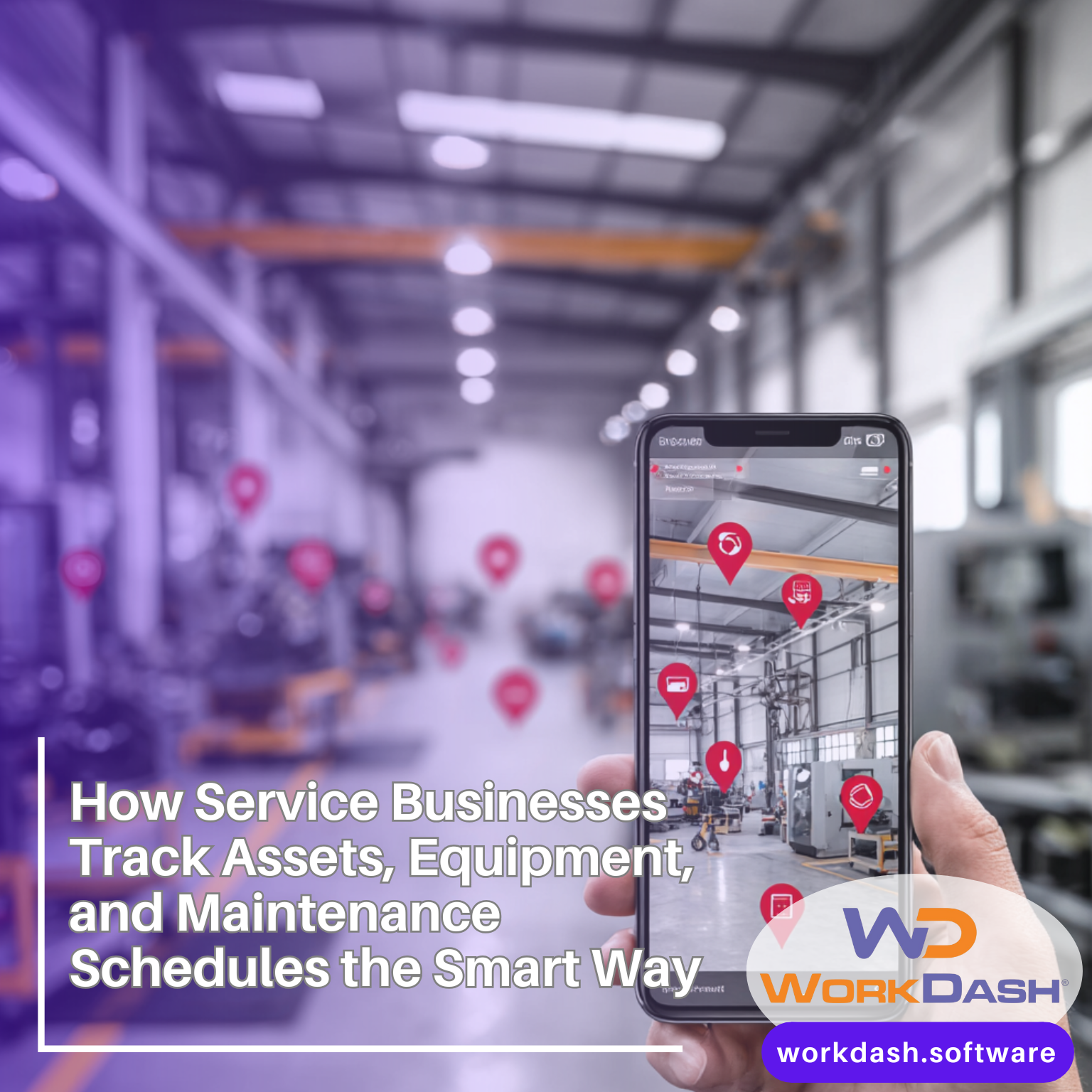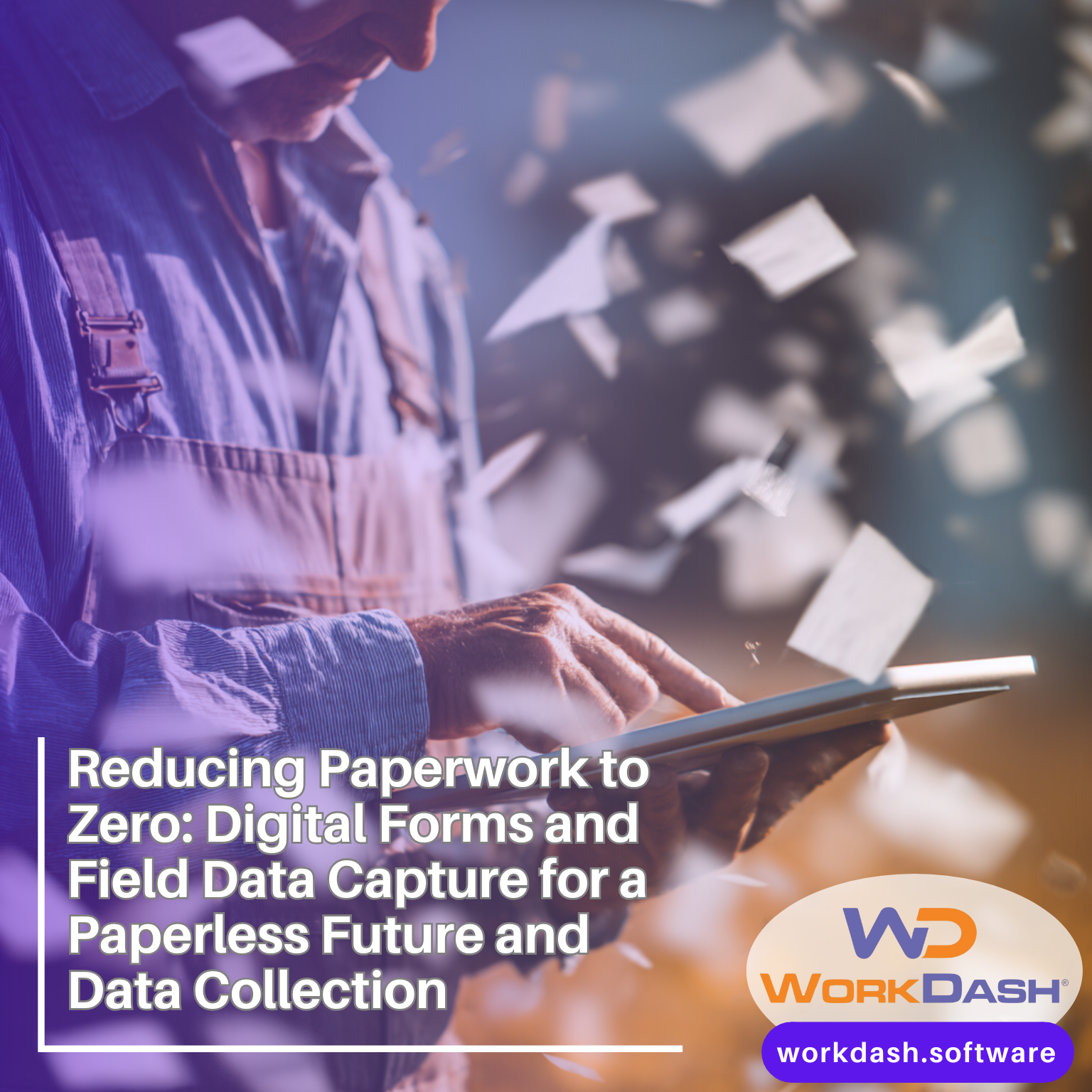Table of Contents
Asset Management for SMEs: Preventive Maintenance, Code Asset Tracking & Audit Trails with Modern Management Software
Summary:
Losing tools, guessing maintenance dates, or reconciling spreadsheets at month-end isn’t a strategy—it’s drag on your margins. This guide shows how SME teams can use practical asset management to build a living management system for equipment, fleets, IT, and facilities. You’ll learn how preventive maintenance cuts downtime, why code labels unlock field usability, and how audit trails keep finance and compliance happy. We’ll connect every step to the WorkDash platform at workdash.software so you can move from static registers to real-time asset tracking that your crews actually use.
Outline
Why asset management matters for SMEs (and what “good” looks like)
What is -enabled asset tracking and how does a qr code improve accuracy?
How do you build a practical maintenance schedule for preventive maintenance?
From request to fix: the role of a work order in maintenance management
Build a clean asset register: centralized asset data, asset hierarchy, and asset history
Audit trails, checklists, and a trustworthy management system
Dollars and sense: fixed asset management, depreciation management, and accounting software
Reports that matter: insights into asset performance and usage for decisions
Choosing tools: comparing software options (and where WorkDash fits)
Your rollout plan with WorkDash—cloud-based asset management, mobile, and change-readiness
1) Why asset management matters for SMEs (and what “good” looks like)
For growing firms, asset management is the discipline that tells you what you own, where it is, who’s using it, and when it needs attention. The payoff is fewer losses, fewer rush purchases, longer asset lifecycles and fewer nasty surprises in the field. Done right, asset tracking becomes the backbone for servicing and safe operations—supporting procurement, inventory management, and finance in one rhythm.
WorkDash provides a practical management platform for SMEs: a single login that unifies asset data, service records, work order flows, and evidence (photos, signatures). Because the platform syncs in real-time, supervisors and the maintenance team see the same truth—whether they’re in the office or on the job.
2) What is -enabled asset tracking and how does a code improve accuracy?
A code is a scannable label that links a physical item to its digital record. When crews can scan on a drill, vehicle, or laptop, they jump straight to the item’s status, manuals, and next steps in the mobile app—no searching or typing. That cuts errors and supports precise asset tracking in the field.
The WorkDash asset tracking solution designed for SMEs pairs durable labels with an intuitive app so you can track asset assignment, location, and custody. It also enables streamline asset tracking during audits and handovers. Add asset tagging for pooled items and you’re ready to prove possession, condition, and warranty at a moment’s notice.
3) How do you build a practical maintenance schedule for preventive maintenance?
Unplanned breakdowns are expensive. A simple maintenance schedule clusters due dates by month and site so crews stay efficient. Start with critical equipment, set a preventive maintenance schedule, and align parts ordering with site visits to streamline travel and labor. Then add condition-based triggers as data matures. All maintenance schedules are displayed on workers calendars so they can easily identify and plan their work activities.
Within WorkDash, you can schedule preventive maintenance, auto-generate the next work order, and push tasks to the mobile app with checklists and parts. As your maintenance management matures, layer basic predictive maintenance rules (hours, cycles, or sensor alerts) to catch issues earlier and extend asset lifespan—without overwhelming the team.
WorkDash maintenance captures various types of maintenance carried out so you can track trends and identify areas of improvement. These include Planned, Corrective or Risk-based maintenance.
4) From request to fix: the role of a work order in maintenance management
A work order is the heartbeat of maintenance processes. It captures a problem or planned task, the asset, the priority, parts, labor, and sign-off. In WorkDash, requests become maintenance work orders with photos and notes; supervisors can assign them, track status, and close them with evidence. That’s how you streamline reporting and reduce back-and-forth.
Prefer structure? Use planned maintenance templates for recurring tasks (filters, inspections, calibrations). The platform supports maintenance tracking so you can prove completion for insurers and customers. Over time, the maintenance team builds reliable asset history that informs better budgeting and fewer surprises.
5) Build a clean asset register: centralized asset data, asset hierarchy, and asset history
Your asset register is your foundation. Start with core identifiers (ID, model, serial), custody, site, and warranty. Add detailed asset attributes like voltage, capacity, or compliance class. Store manuals and approvals in one centralized asset record so crews always have what they need. This is the data quality that makes the rest of asset management possible.
Map an asset hierarchy (system → subsystem → component) to connect parent/child servicing. With WorkDash you’ll capture asset condition, meter readings, and asset data that supports lifecycle management and smarter replacements. The result is a structured catalogue that helps you manage asset decisions instead of chasing emails.
6) Audit trails, checklists, and a trustworthy management system
Auditors and customers want proof, not promises. WorkDash builds an audit trail automatically—who changed what, when, and why—across assignments, work order completions, and inspections. That makes your management system defensible during certification or incident reviews and gives leadership confidence that the controls work.
The platform includes templates for safety and quality checks to streamline evidence capture. And because asset management software provides real-time visibility of status and events, you can answer “where is it?” or “who had it last?” in seconds. For teams on the move, the mobile app keeps these confirmations only a scan away.
7) Dollars and sense: fixed asset management, depreciation management, and accounting software
Operations and finance need the same truth. With WorkDash, fixed asset management links inventory and service data to finance flags (capex/opex, location, custodian). You can track asset utilisation, warranty windows, and retirements and feed summaries to accounting software to support depreciation management and audits.
Because your physical records and financial asset management align, you reduce write-offs, accelerate disposals, and plan replacements earlier. Add reorder points and light inventory management for spares, and your field teams stop waiting on parts while back office gains cleaner forecasting of asset lifespan.
8) Reports that matter: insights into asset performance and usage for decisions
Busy managers don’t want 50 charts; they want insights into asset performance that change decisions today. WorkDash dashboards highlight overdue services, high-fail categories, and the sites with the longest downtimes. You also get insights into asset usage (who, where, how often) to right-size fleets and relocate idle gear.
Need outside benchmarks? While enterprise suites like SAP asset manager exist for global programs, SMEs can get 80% of the value with focused views and management features that drive action. Focus your reviews on exceptions and trends, not just totals—this is how asset management gets out of the spreadsheet and into daily leadership rhythms.
9) Choosing tools: comparing software options (and where WorkDash fits)
There are many software options—from spreadsheets to brand-name tools like Asset Panda—but SMEs often need an asset management solution that’s simple, mobile-first, and easy to deploy. WorkDash is a management platform designed for small teams that want an asset management platform without enterprise overhead.
Under the hood you’ll find a suite of maintenance management features: maintenance management software flows, bar/ scanning, asset tracking capabilities, and approvals. For larger programs that need enterprise-grade asset management, WorkDash integrates with BI and finance while remaining software tailored to field reality. It’s one of the few software solutions that balances usability with strong management capabilities and management tools.
If you do graduate to heavy suites later, your clean data and audit trails from WorkDash make migration straightforward—because the platform keeps integrated asset records tidy from day one.
10) Your rollout plan with WorkDash—cloud-based asset management, mobile, and change-readiness
Adoption beats ambition. Start with your top-risk categories (fleet, power tools, IT) and label them with qr and barcodes. Import your starter list to WorkDash (or build as you scan), then train supervisors to raise a work order from the field. This focused first month creates momentum and streamline maintenance across crews.
WorkDash is cloud-based asset management, so updates sync instantly. The maintenance management platform pushes tasks and captures evidence from any site—even offline—through a lightweight mobile app. Add service management for vendor repairs and warranty claims, and expand gradually. You’ll end up with efficient asset care that’s predictable, with real-time asset tracking for leaders and asset management features that crews enjoy using.
How WorkDash connects it all (feature checklist)
code scanning links assets to actions; management software provides real-time tracking for location and custody.
Asset tracking software views show check-in/out history and maintenance tasks at a glance.
CMMS software concepts, delivered simply: a computerized maintenance management backbone without bloat.
Maintenance software automations create the next work order as soon as the last one closes.
Asset tracking maps, photos, and notes build a defensible asset history and audit trail.
Asset management tools for approvals and notifications keep teams aligned.
Comprehensive asset care across operations and finance reduces surprises and supports planning.
Advanced capabilities when you’re ready
Asset management capabilities for condition scoring (asset condition) and meters inform replacement strategy.
Asset tracking capabilities extend to geofencing and precise asset tracking in large facilities.
Asset management software provides real-time exceptions so you can escalate quickly.
Management software provides real-time tracking while role-based access protects sensitive records.
Asset tracking solution designed for SMEs scales across sites without re-platforming.
FAQs
Is WorkDash an ERP?
No. It’s a focused business management platform designed for SMEs that want pragmatic asset management and maintenance management flows, not a sprawling system. It integrates cleanly with finance and analytics so you keep best-of-breed where it matters.
Can we start small?
Yes. Label a single asset, build a light maintenance schedule, and expand. You’ll create quick wins and real audit value.
How does this differ from big suites?
Enterprise stacks like SAP asset manager are powerful but heavy and expensive. WorkDash delivers the 80/20 set—labels, schedules, orders, audits—fast, at SME cost and complexity.
Bullet-Point Summary: What to Remember
Treat asset management as an everyday habit, not a project; anchor it in a clean asset register and asset hierarchy.
Use code labels and a mobile app so crews update records at the point of work; this enables real-time asset tracking.
Build a practical maintenance schedule for preventive maintenance; schedule preventive maintenance, create a work order, and schedule maintenance with parts and checklists.
Capture evidence every time to protect compliance; audit trails live in your management system automatically.
Link operations and finance with fixed asset management, depreciation management, and clean feeds to accounting software.
Focus reporting on decisions: insights into asset performance and insights into asset usage drive replacement and redeployment.
Choose tools that field teams will actually use; balance power with simplicity—WorkDash offers software tools and software solutions that are software tailored for SMEs.
Start small, then scale: label critical items, standardise maintenance work orders, and grow into a strong, enterprise-grade asset management posture.
Remember the goal: streamline handovers, reduce downtime, and extend asset lifespan while keeping leadership confident with clear, living data.
Ready to see it in practice? Visit workdash.software to trial the asset management platform and turn scattered records into a single source of field truth.




